 Separators (Spacers)
Separators (Spacers)
Separators are circular spring devices made of metal or elastic that are fitted between the posterior teeth to ease the teeth apart and create room for metal bands that will be placed around the teeth later on in the treatment process. We will remove the separators before placing the bands. You may experience some soreness for a few days after receiving your separators, but over-the-counter pain relievers should sufficiently eliminate any discomfort. After your separators are placed, we recommend that you avoid eating any sticky foods or using toothpicks and floss in the treated area until the separators are removed.

Bite Plate
A bite plate is a removable appliance that decreases the overbite of the front teeth. For optimal results, orthodontists recommend that the bite plate be worn at all times, except during mealtimes, sports, and brushing the teeth. When placed in the mouth, the bite plate separates the posterior teeth and prevents the lower anterior teeth from touching the roof of the mouth. As treatment progresses, the back teeth will erupt vertically until they come together in an improved bite. This means the front teeth will no longer overlap excessively.
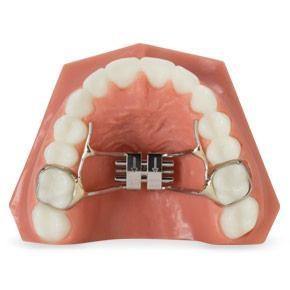
Palatal Expander
A palatal expander increases the width of the upper jaw. It is worn for several more months beyond achieving the desired expansion to allow the newly formed bone between the two sides of the upper jaw to mature and become stable.
Our team will provide you with specific instructions on how to turn your expander and the required number of turns for your treatment.
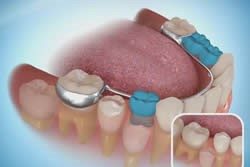
Lower Lingual Holding Arch (LLHA)
The lower lingual holding arch maximizes the available space for the adult teeth in the lower jaw by preventing the adult molars from shifting when the baby molars fall out or are extracted.
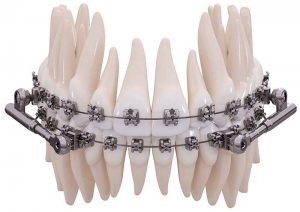
PowerScope™ Appliance
The PowerScope™ Appliance decreases the horizontal overlap (i.e., overjet) of the upper and lower teeth by bringing the lower jaw and teeth forward and the upper molars backward. It is commonly recommended for children, whose jaws are still developing, and is typically used for 9-12 months.
Headgear
According to the American Association of Orthodontics (AAO), headgear is the general reference to an external appliance that guides facial and jaw growth through applied force. Orthodontists utilize headgear when the teeth need to shift into a position that cannot be achieved with brackets, wires, or clear retainers alone. Retraction headgear, or class II correction, retracts the upper jaw. Headgear appliance therapy is usually recommended while a child’s jaw is still growing in order to treat the bones in the jaw while they are erupting into place. This way, the appliance can guide the jaw bones and teeth into proper positions before they have matured and stabilized.
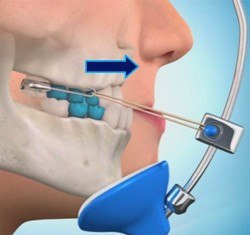
Facemask
A facemask appliance is recommended at a young age, often as young as six, to help patients with underdeveloped upper jaws bring the jaw forward. These patients often experience an underbite, and because the lower jaw grows faster than the upper jaw during puberty, it is important to treat this development early.
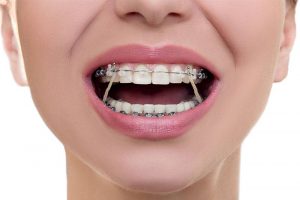
Elastics (Rubber Bands)
Elastics are often used to help close unwanted spaces and improve the bite of the upper and lower teeth. They are a highly important method to keeping your treatment progress on schedule when worn correctly and consistently. Please feel free to contact our office if you run out of elastics before your next appointment, and will gladly send you more in the mail.
Interproximal Reduction
Dr. Galati uses a thin, flexible diamond strip to gently re-contour and smooth the enamel between adjacent teeth. This alleviates mild-to-moderate crowding when expansion and/or extractions are not ideal, and can be an invaluable method. It can also be used to reshape teeth so that they look more attractive, or to correct discrepancies in tooth size and allow the upper and lower teeth meet properly.
IPR is performed in small batches, removing only about 0.2 mm of enamel per appointment. The procedure is painless and does not require the use of anesthetic because enamel does not have nerve endings. Clinical studies have determined that IPR does not increase a tooth’s risk of cavities, not does it make the gums that support teeth more prone to developing periodontal disease.
Contact Galati Orthodontics at 480-656-7801 today and schedule your consultation with Dr. Galati if you have further questions.
